
In and of itself, a diagnosis of breast cancer is a LOT to process. Many patients feel as if they’ve barely caught their breath when they’re suddenly thrust into the world of cancer care – a world that includes new terms and language related to their diagnosis, a myriad of treatment options, and numerous doctors, each who play a critical role in patient care and recovery.
While it can be hard to feel at peace when you’re diagnosed with breast cancer, Dr. Grace Makari-Judson, Associate Medical Director of Cancer Services at Baystate and specialist in breast medical oncology, believes there are a lot of reasons for patients in Baystate Regional Cancer Program to breathe a little easier.
She says, “At Baystate, breast cancer care is truly a team effort. Our team of breast care specialists come together on a weekly basis for a multidisciplinary breast conference, organized by our breast pathologists, in which we discuss current cases, review imaging and pathology slides, and confer about treatment recommendations for individual patients. Every case gets the benefit of the expertise and input of numerous doctors with deep experience in treating breast cancer.”
The Baystate breast cancer team is comprised of the following types of specialty physicians:
- Breast radiologists
- Breast pathologists
- Breast surgeons
- Medical oncologists
- Radiation oncologists
- Plastic & reconstructive surgeons
Breast Cancer Q&A with Experts from the Baystate Health Care Team
Below, we speak to doctors from each of the above disciplines about the overall team approach and their specific role in the cancer treatment process.
What makes the Baystate team approach to cancer treatment so important and effective?
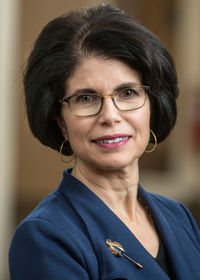 Dr. Grace Makari-Judson, Associate Medical Director of Cancer Services at Baystate and specialist in medical oncology
Dr. Grace Makari-Judson, Associate Medical Director of Cancer Services at Baystate and specialist in medical oncology
“First, it’s guideline-driven. That is, the decisions we make are based on data. We’re all operating from the same framework regarding best practices. From there, we work together to create customized care plans based on each patient’s needs. The second important aspect of a team approach is the fact that you have very experienced specialists sharing their expertise and understanding of the latest research and advances in the treatment of breast cancer. No one operates in a silo. While we formally meet once a week, we actually communicate quite frequently throughout the week regarding patients and their treatment plans.”
What role does imaging play in the diagnosis and treatment of breast cancer?
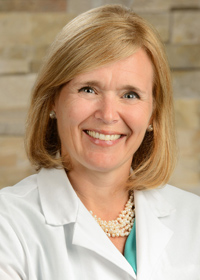
Dr. Jennifer Hadro, Interim Medical Co-Director of Breast Imaging, Department of Radiology
“The imaging department is often the first entry point for many breast cancer patients. This is fortunate because screenings allow us to discover cancers very early, when they’re still very treatable.
“If we see something unusual, we will call a patient back in for additional screening. There’s often nothing to be concerned about. But if something seems off, our department performs a biopsy. If that’s diagnosed as cancer, we are the ones who inform the patient and help them set up an appointment with a breast surgeon. We see patients again before surgery to place a marker that helps guide the surgeon to the area where the biopsy was taken, and, of course, we’re involved in an ongoing post-surgery screenings and treatment.”
What does a pathologist do?
Dr. Giovanna Crisi, Baystate Health Breast Pathologist
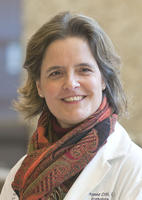
The breast pathologist is the most important team member that you never get to meet. They are behind the scenes interpreting biopsy and surgical specimens to make an accurate diagnosis. The additional testing done by the pathologist helps to direct the treatments that the medical oncologist recommends.
“Through sharing information, the team arrives at the best therapy options for each patient. The information a pathologist contributes to this discussion goes beyond the diagnosis and may contain information on the specific characteristics of a lesion enabling an individual approach to each patient.”
What happens at my first breast cancer appointment?
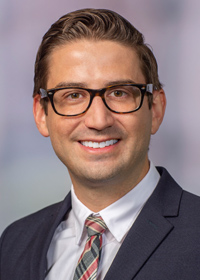 Dr. Jesse Casaubon, Baystate Surgical Oncology & Breast Specialists
Dr. Jesse Casaubon, Baystate Surgical Oncology & Breast Specialists
“Breast surgeons are often the first person a patient meets with after receiving a diagnosis of breast cancer. At the first visit, we typically review what the mammogram and biopsy have revealed and discuss if other tests, like an MRI, might be helpful in assessing next steps."
“So much of what happens next depends upon the individual situation. Some patients might benefit from doing chemotherapy prior to surgery whereas others might benefit more from the surgery-then-chemotherapy route."
“This is where the team approach to care is very helpful. Patients benefit from the input of both medical and radiation oncologists who can speak to the best treatment options for the given situation. Our goal is to always create a plan that maximizes benefit of the care of choice and minimizes the overall toxicity.”
What does a medical oncologist do?
Dr. Grace Makari-Judson, Associate Medical Director of Cancer Services at Baystate and specialist in medical oncology
“Medical oncologists specialize in diagnosing and treating cancer. Patients typically first meet their medical oncologist after their consult with the breast surgeon and continue to meet with them throughout the entire course of their care. While surgery and radiation focus on one area of the body, chemotherapy, hormone therapy, and targeted therapy, prescribed by the medical oncologist are medications that go throughout the bloodstream to address cancer cells wherever they may be.
The oncologist works closely with the other doctors involved in a patient’s care to create an effective treatment plan. They really accompany and advise patients throughout their treatment and beyond. Depending upon what treatment they’re currently receiving, we might see them as frequently as every two to three weeks. Once treatment has concluded, we create a survivorship care plan for each patient that guides which providers they will continue to see and how frequently."
“As a medical oncologist, I strive to be a steady and consistent point of contact for patients as they navigate every turn in their care plan. The goal is to make their treatment as streamlined and efficient as possible so the patient can focus on their well-being and leave the logistics of planning and scheduling care to us.”
What’s the difference between chemotherapy and radiation?"
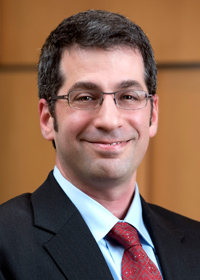 Dr. Seth Kaufman, Radiation Oncologist
Dr. Seth Kaufman, Radiation Oncologist
“While we often first meet with patients shortly after a biopsy-confirmed diagnosis of breast cancer, there are instances when the first encounter happens after surgery. So much depends upon the stage and size of the cancer and other individual factors."
“Much of the first meeting is devoted to exploring how radiation differs from and works in concert with chemotherapy and surgery. Simply put, surgery is effective at removing the tumor, chemotherapy is good for treating any cancer cells they may have spread from the original site of the tumor, and radiation focuses on controlling any cancer that remains near the site of the tumor. It does a better job of local clean-up than chemo does but can’t do what surgery does."
“While radiation is most often the last step in treatment before reconstructive surgery if that’s taking place, we are involved in all the treatment discussions. How a patient responds to the different treatments determines how likely the need for radiation will be and what’s the appropriate timing for any radiation treatment.”
When do patients first consider their options for reconstructive surgery and what does the path to surgery look like?
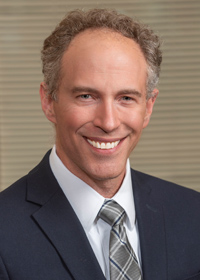 Dr. Ben Schalet, specialist in Plastic Surgery, Aesthetic Plastic Surgery, Reconstructive Plastic Surgery
Dr. Ben Schalet, specialist in Plastic Surgery, Aesthetic Plastic Surgery, Reconstructive Plastic Surgery
“The earliest discussions regarding reconstructive surgery most often take place after a patient receives a diagnosis but prior to their breast surgery. We typically discuss what the likely options will be post-surgery and any treatments they may receive.
“At that point I sort of drop out of the picture for a while. The goal of reconstruction is to not get in way of cancer treatment. If someone’s receiving chemotherapy or radiation, my job is really to standby until they are ready for the surgery to remove the tumor. At that point, I confer with the breast surgeon and review the best options for the patient, how incisions will be made, and what treatment, if any, will follow that surgery.
“In the case where there’s no additional treatment planned, we can actually do an implant at the same time as the mastectomy. But if further treatment is required, I will insert a tissue expander in the breast—think of a water balloon with a small fill hole—that serves as a ‘placeholder’ while the patient finishes whatever treatment they need. Depending upon what the individual’s goals are post-reconstruction surgery, I may see them every few weeks to add or remove fluid from the expander. Throughout, I’m in touch with either the radiation or medical oncologist to get a read on when they might be ready for implant surgery.
“Another reconstructive option is what’s called autologous breast reconstruction. This involves using tissue from the patient’s body—usually the belly—instead of an implant to rebuild the breast. It’s a little more complicated as it requires two incisions but for a good number of our patients, it’s the preferred option.
“Regardless of what type of reconstructive surgery a patient opts for, I usually see them on an annual basis to make sure that they’re doing well. While silicone implants last somewhere between 10-20 years, they can break so I want to make sure it’s in good shape. And for patients with implants or autologous reconstruction, I want to see how they’re doing physically. If a patient has gained or lost a significant amount of weight, there can be a loss of symmetry between the breasts or even the nipples. Plus, there are matters related to sensitivity and scarring that I want to revisit with patients. The goal is for them to have the function they want for the balance of their lives. Annual visits help ensure that happens.”
What happens after breast cancer treatment finishes?
In the same way that everyone’s cancer treatment plan is different, so is their post-cancer life.
Every breast cancer patient at Baystate receives a survivorship care plan from their medical oncologist. This plan outlines the recommended follow-up visits, screenings, or tests.
“Each plan reflects the specific needs of each patient,” says Dr. Makari-Judson. “Some patients will require more post-cancer care, including infusions, than others. The goal of every plan is to ensure the patient remains cancer-free and is able to once again enjoy their lives as fully as possible.”
Breast Cancer Awareness Month
During October, we are focus on breast cancer awareness and prevention. Join us for the Rays of Hope Walk and Run for the Cure of Breast Cancer and register for free virtual events with Baystate doctors. Sign Up to Learn More.